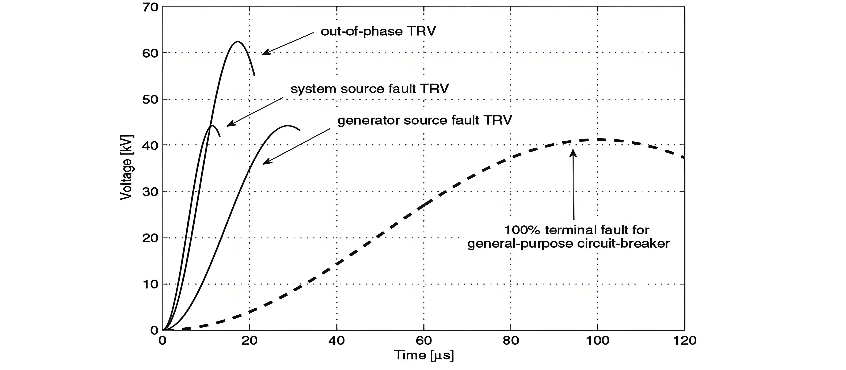
An out-of-phase condition transpires when a generator circuit breaker (GCB) closing operation is executed precisely at the moment when there is a lack of synchronism between the voltage phasors of the generator on one side of the GCB and those of the external grid on the other side. Another common scenario is when a generator runs in an out-of-phase state due to system instability, necessitating the tripping of the GCB.
The severity of such an interruption is directly related to the out-of-phase angle δ. Given that the generator faces significant risks when δ exceeds 90°, protective relays are typically configured to trip at around δ = 90°. Standardized out-of-phase transient recovery voltage (TRV) values are established based on a 90° out-of-phase angle at the rated voltage. It is worth noting that for smaller generator units, larger out-of-phase angles can still occur.
When the out-of-phase angle δ reaches 90°, the current is approximately 50% of the fault current supplied by the system. On the voltage side, the GCB is subjected to a TRV with a rate of rise of the recovery voltage (RRRV) roughly equivalent to that in a system-source fault, but its peak value is nearly twice as high. The out-of-phase current specified in the standard is indeed set at half of the system source-fault current.
The figure illustrates the standardized TRV waveforms for various generator faults, juxtaposed with the TRV of a 100% fault for a 24 kV GCB, providing a clear visual comparison of the electrical characteristics under different fault conditions.

